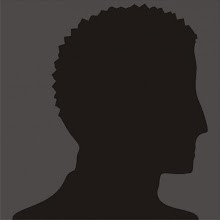It will first highlight the disadvantages and provide some positive information as to the modifications and features that can be found in other models that negates the disadvantages. Specific model identification will not be mentioned but a generalized explanation of features will highlight the best uses that are found in models being described.
Handicapped bathtubs stigmatize the user
Needless to say, some people may not be able to afford having two types of bathtubs in one household. One of the known disadvantages of a handicapped bathtub under these circumstances is that most models occupy the space originally used for a regular bath tub. The appearance of handicapped bath tubs could be an eye sore to some other users. This could be because they are continuously reminded that a member of the household is physically impaired.
The concept of handicap bathtubs is slowly being modified with the advent of "universal designs". The features that are used specifically for the handicapped user are now being modified in such a way that they are included in more "normal" looking bathroom concepts. Helpful signs and specialized features are blended to look like it would be useful even for users that do not really need special support.
A universal design promotes equitable use and the safety features are presented to look like added choices of utilities within the bathroom.
It is space consuming
Since there are models that even allow wheelchairs to get in, it is understandable that these models are space consuming. They really do take the place of a regular bathtub considering the cost of renovation and availability of space.
Most models now not only have different sizes but are also have universal designs. In limited spaces, handicap bathtubs may come in models that only support standing positions while bathing. This minimizes the space consumed while keeping the regular bath tub in its original place. Other larger models allow for one side to be used for purposes of attending to a disabled person or provide support only on one side of the space consumed.
Handicapped bath tubs are expensive
Prices of these types of bath tubs range from $2,000 to $6,000, depending on features and functionality.
Some of the more specialized features like whirlpools and hydrotherapy features may cause some models to be pricy. However, if one thinks of replacing the regular bath tub, the cost of these bath tubs would not matter much if the added benefits can be used by other household members.
The safety and versatility of some of the models are really worth the money paid for them. Some even have a total of 8 jets included for a hydro massage effect. They also have temperature regulators and control functions which one cannot find in a regular bath tub. If a person who has physical disabilities finds comfort and convenience in most of the features that are provided, it would also have better effects for people who really do not need the added support.
To summarize, all the features that are integrated in a handicapped bathtub may be enjoyed by other users as well. There may be disadvantages but the number of useful and safety features outweigh those disadvantages. The fact that it tremendously helps a person with disability is enough to consider having a handicapped bath tub around.
Best view Premier Bathtubs with Firefox 3+ & minimum monitor resolusion 1280×1024px
Template Sisi Terang © 2010 DheTemplate.com by ireng_ajah
